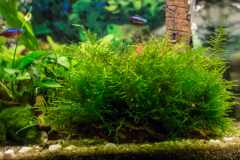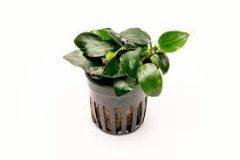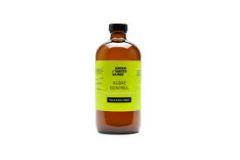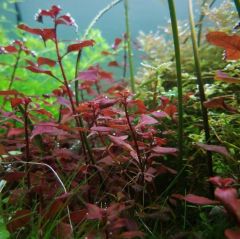Transform Your Tank: Choosing the Best Aquarium Plants for a Thriving Aquascape
Choosing the right aquarium plants can be a game-changer for your aquatic environment. This article is your straightforward guide to understanding which plants will best suit your tank, creating a vibrant landscape and a healthy habitat for fish. Dive into tips on selecting, planting, and nurturing your aquarium plants, all designed to help you cultivate a stunning and sustainable aquascape.
Table of Contents
Key Takeaways
- Live aquarium plants function as biological filters, improve water quality by absorbing toxins, provide habitat enhancement for fish, and enhance the aesthetic appeal of aquariums.
- A variety of freshwater aquatic plants like ferns, mosses, and stem plants can be used in aquascaping to create dynamic environments. They require specific conditions and maintenance such as proper positioning, lighting, and regular trimming.
- Tissue culture aquarium plants are a modern, disease-free option for aquascaping that offer easy propagation and require careful acclimation and planting, while maintaining plant health involves appropriate lighting, fertilization, and pruning.
The Benefits of Live Aquarium Plants
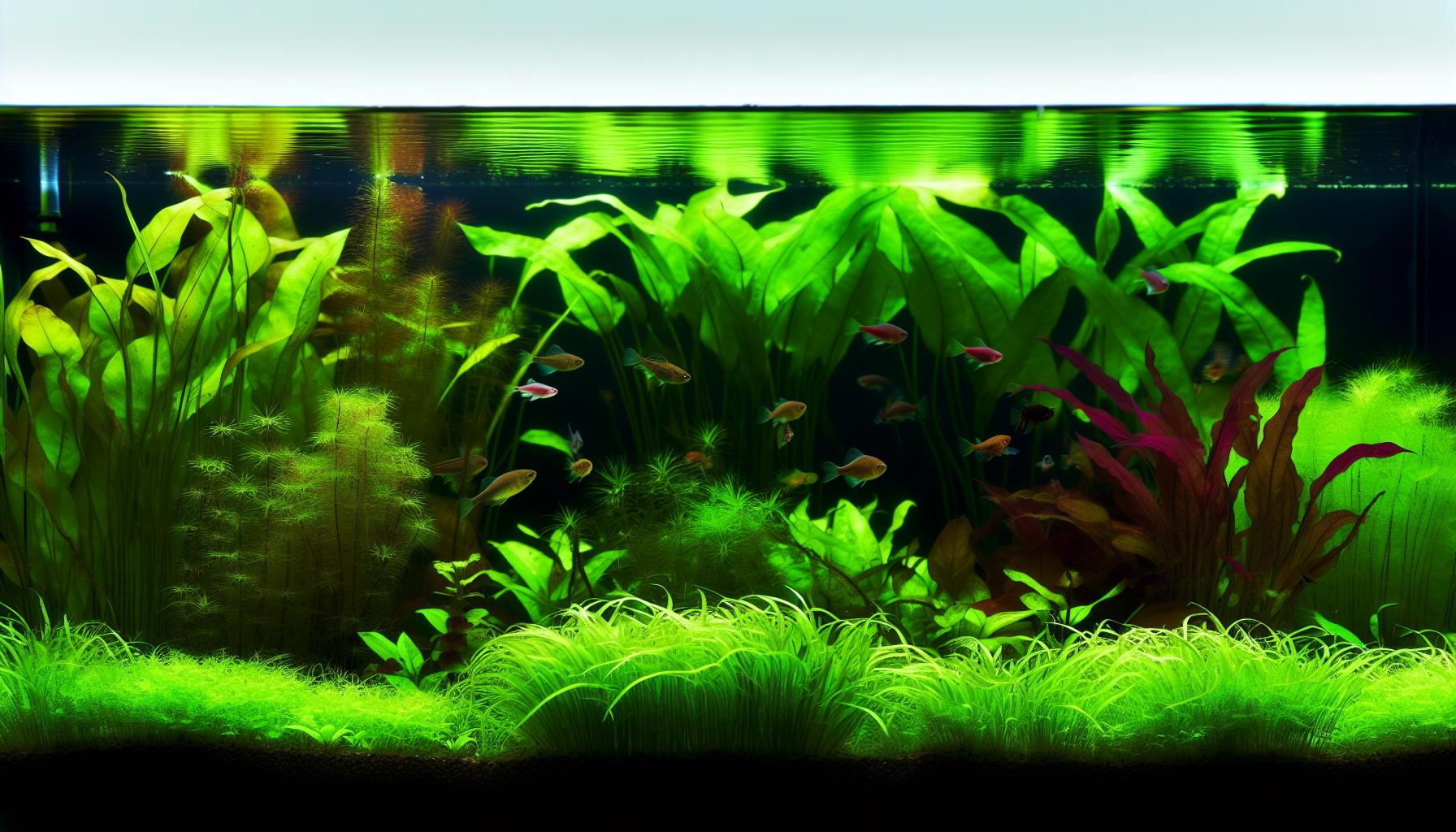
Live aquarium plants offer more than just aesthetic appeal – they bestow multiple benefits on the aquarium environment and its dwellers. To begin with, these plants serve as biological filters, aiding in maintaining clarity and quality of tank water. They have a significant role in soaking up harmful toxins such as nitrates and ammonia, potentially harmful to fish health if left uncontrolled.
Natural Filtration
Our little green friends in the tank are hard at work even when we don’t realize it. Live aquarium plants contribute to natural filtration by absorbing nitrates and other toxins, which are detrimental by-products in the water resulting from fish waste and decaying organic matter. Moreover, the development of a strong root system in live aquarium plants hinders anaerobic activity in the substrate, thereby preventing the accumulation of potentially harmful gases.
By photosynthesis, submerged aquatic plants increase the levels of dissolved oxygen in the tank, benefiting not only the fish but also curbing the chances of algae proliferation, as algae usually flourish in low-oxygen conditions.
Habitat Enhancement

Apart from water quality benefits, live aquarium plants offer the following advantages:
- Aid in establishing an ecosystem that closely resembles the natural habitats of aquatic fish
- Provide important territorial spaces and refuge
- Offer safe hiding spots
- Reduce fish stress within the aquarium
Furthermore, the foliage of live plants augments visual appeal and fosters fish well-being by enriching their environment with engaging and interactive elements.
Aesthetic Appeal
The aesthetic charm of an aquarium is undeniably amplified with the addition of live plants. Mimicking the look of natural underwater habitats, live aquarium plants make the aquarium more visually similar to the environments that inhabitant species originate from. But it’s not just about the natural look; aquarium plants enhance the tank’s appearance by adding a variety of textures, colors, and forms, contributing to a more dynamic and aesthetically appealing display.
A diverse array of vibrant or uniquely shaped live plants, when placed strategically, can serve as focal points in a pond aquarium, effectively captivating the viewer’s attention and shaping the visual experience.
Popular Types of Freshwater Aquatic Plants
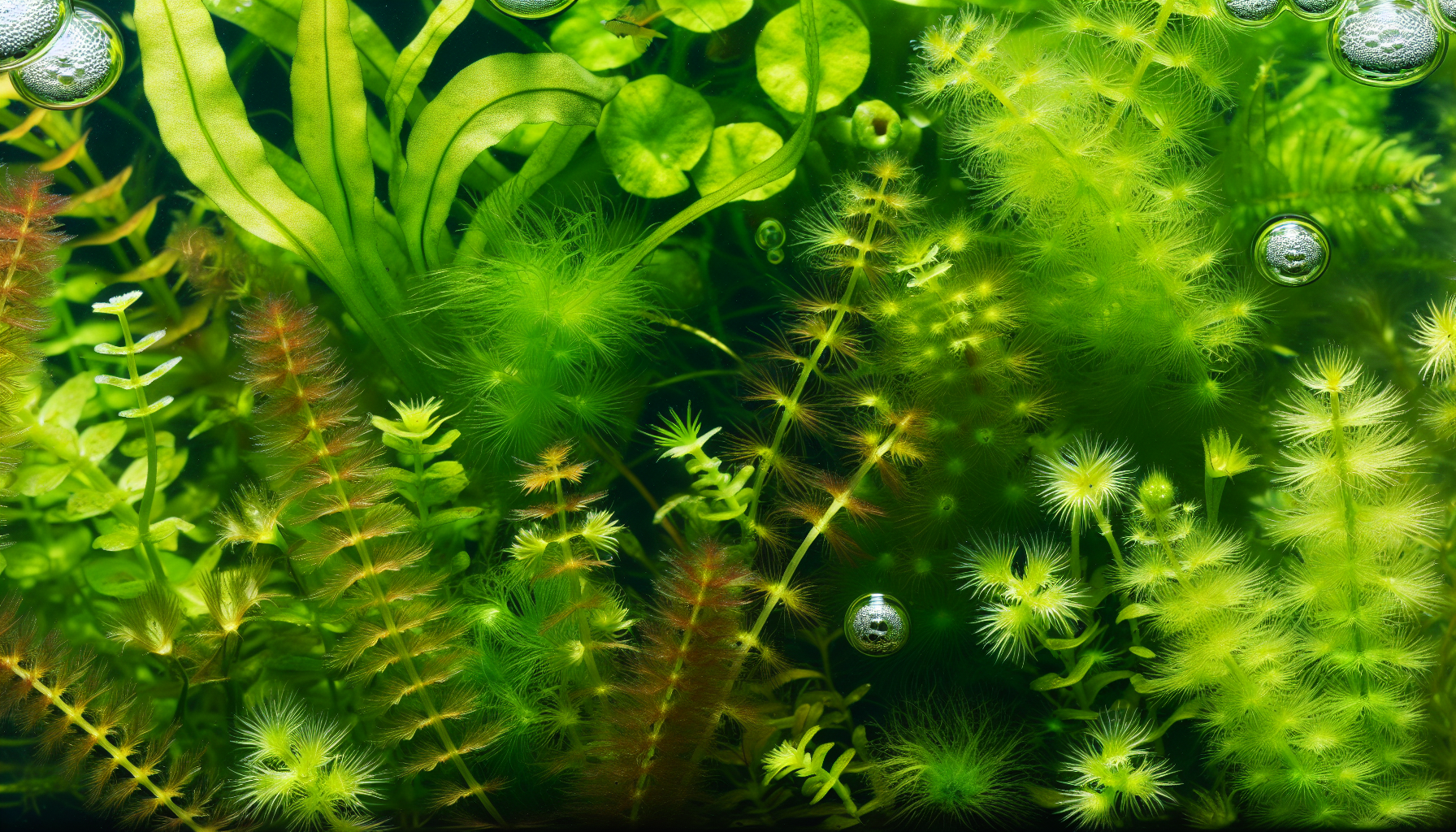
Having covered the basics, let’s explore the realm of freshwater aquatic plants. Among the most popular types you’ll find are ferns, mosses, and stem plants, each offering unique benefits and characteristics to an aquascape. Incorporating various aquatic plants, ranging from carpeting plants to stem plants and mosses, can add depth and texture to the aquascape, making your aquarium truly stand out.
One useful advice is to attach non-root plants, such as mosses and ferns, to driftwood or rocks outside the aquascape before placing them in the tank to ensure they remain in place.
Ferns
Aquarium ferns represent a diverse group of plants that are adaptable to different conditions. They can either be anchored to hardscapes such as rocks and driftwood or planted directly in the substrate. Their preference for indirect light and the ability to attach to hardscape elements makes ferns highly versatile for aquascaping designs in an aquarium.
Among the popular aquarium ferns known for their distinct appearances and growth preferences are the Java Fern, African Water Fern, Windelov Fern, and Trident Fern.
Mosses
Mosses offer a variety of distinct growth patterns, textures, and bright green colors, making them a fantastic addition to any aquarium. They create lush, green carpets that provide an ideal environment for fry and small invertebrates to conceal and forage.
For controlling growth and preserving the health and appearance of mosses, routine trimming with curved aquascaping scissors is necessary. It’s advisable to turn off the filtration system during trimming to prevent floating trimmings from spreading. Java Moss and Christmas Moss are common to find for sale online
Stems
Stem plants are often chosen for the midground or background in aquariums, adding visual variety with their rapid growth and diverse leaf shapes and colors. A notable quality of stem plants is their fast growth rate, enabling them to be propagated easily by trimming and replanting the tops or lateral shoots. Hygrophila is a genus of stem plants favored for its quick-growing species and minimal care requirements, making it particularly appealing to aquarists.
Stem plants, for instance Ludwigia and Rotala, necessitate routine maintenance such as bi-weekly trimming to assure they do not block light to shorter-growing aquarium plants and to encourage denser growth.
Top Live Plant Picks for Beginners
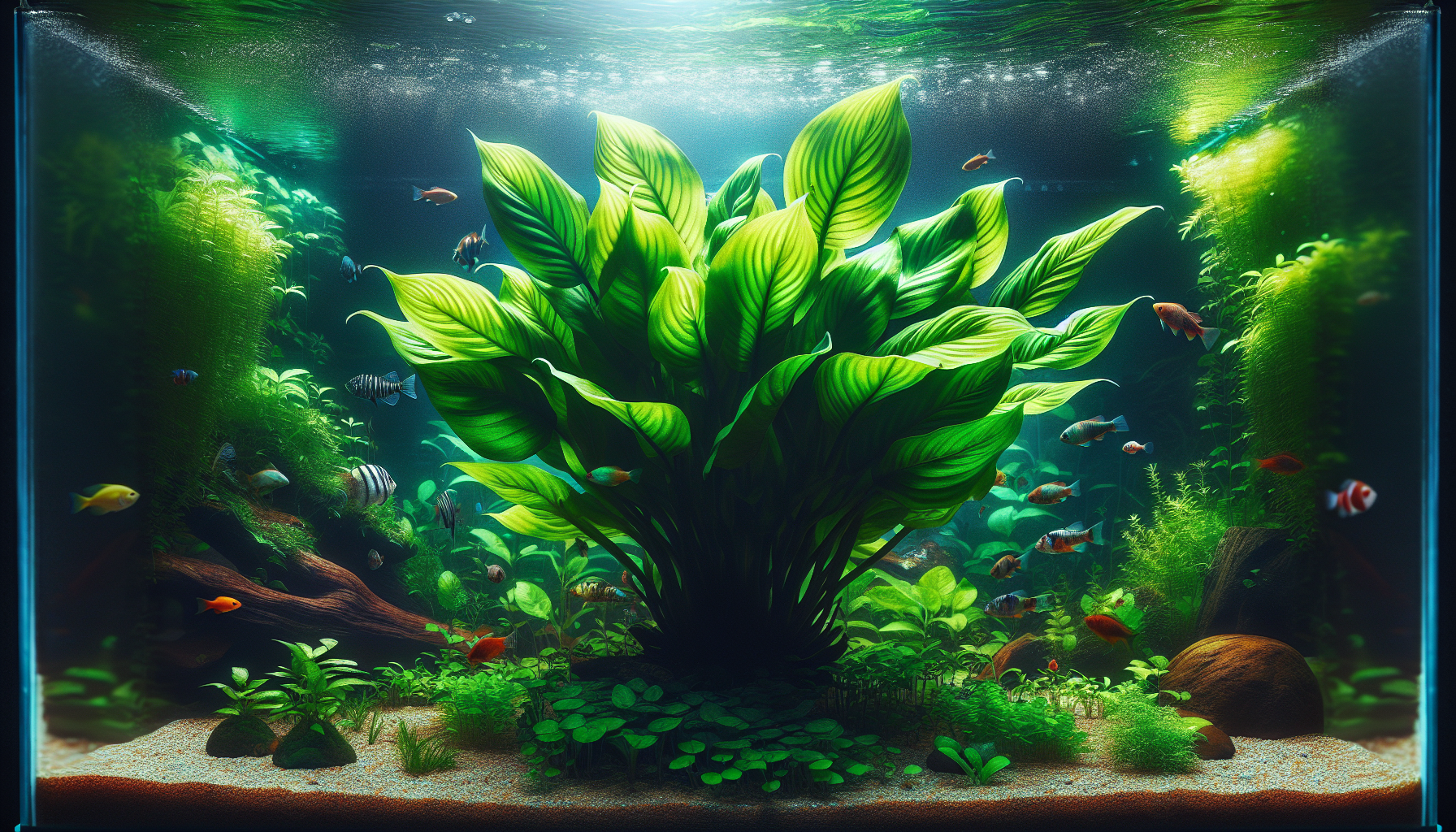
For beginners, the world of aquarium plants might seem overwhelming. But fear not! There are several hardy and low-maintenance plants that are perfect for those just starting on their aquascaping journey. Selecting these plants will ensure a thriving aquascape with minimal effort. Some excellent choices for novice aquarists include:
- Anubias Nana
- Java Fern
- Amazon Sword
- Marimo Moss Balls
- Cryptocoryne wendtii
- Aponogeton crispus
- Bacopa caroliniana
- Dwarf Sagittaria
These beginner-friendly plants come with unique features such as the ability to grow in low light and heightened resilience in various water conditions.
By concentrating on these beginner plants, newbies to aquascaping can appreciate an attractive and low-maintenance aquarium, laying the groundwork for a successful aquatic hobby.
Anubias
Among the most beginner-friendly plants is the Anubias. This plant is robust and suitable for community tanks, requiring infrequent trimming. Anubias should be trimmed when they become too dense, using a sharp knife or scissors to carefully cut through the rhizome and reattach sections to the hardscape.
Java Fern
Java Fern is recognized for its beginner-friendly nature and adaptability to various water conditions, making it an excellent choice for those new to aquarium keeping. The plant thrives in a variety of water conditions, demonstrating a high degree of adaptability that is ideal for diverse aquarium environments.
Additionally, Java Fern requires minimal upkeep, as it does not need CO2 supplementation and can grow well even in low light situations.
Amazon Sword
Lastly, the Amazon Sword plant is a popular choice for novices. These hardy plants can thrive in diverse water conditions and are well-suited for aquarium setups. Amazon Sword plants reproduce by shooting a long stem with runners from which new small plants can develop, which can be detached for propagation.
To maintain these plants, decaying leaves should be carefully trimmed away without harming the central root area to encourage new growth.
Tissue Culture Plants: A Modern Approach to Aquarium Planting
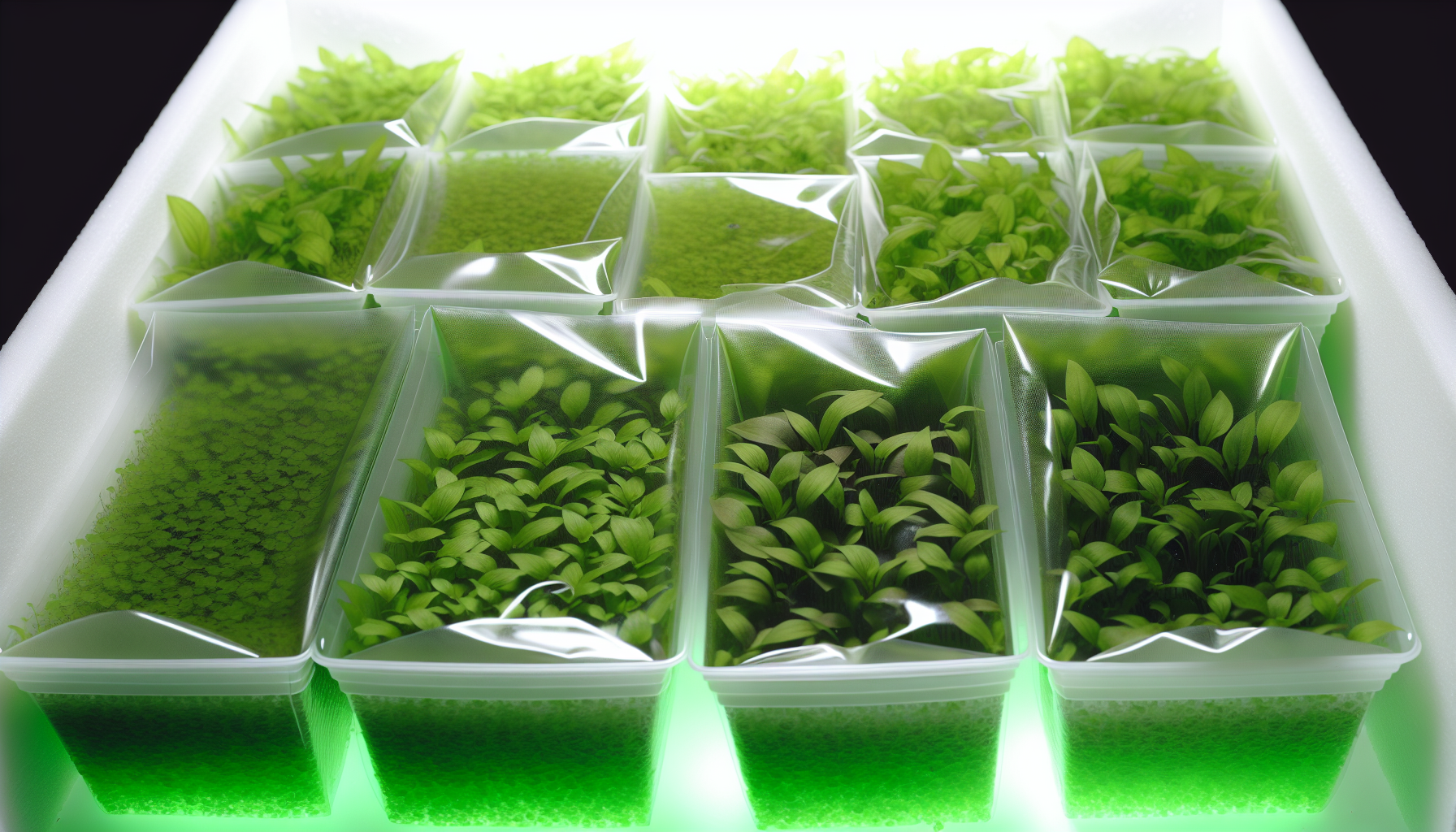
With a fundamental grasp of live plants, let’s examine a contemporary approach to aquarium planting - tissue culture plants. This sophisticated technique represents a significant advancement in the field of aquarium planting.
Advantages of Tissue Culture Plants
Tissue culture aquarium plants, also referred to as in vitro plants, are grown under sterile conditions on a nutrient culture medium. This means they are guaranteed to be 100% free from snails, algae, and diseases, providing peace of mind for aquarists. Moreover, these plants are typically sold in clear plastic cups, offering a great value with many plants provided in each cup.
How to Acclimate and Plant Them
When introducing tissue culture plants to your aquarium, proper acclimation is key. Here are the steps to follow:
- Gently rinse the plants under tap water to remove the gel.
- Check for any retailer-provided instructions for acclimatization.
- Plant the tissue culture plants in the substrate with precision using tweezers.
- Divide the plants into smaller pieces for distribution across the planting area.
- Handle these plants with care during the planting process to prevent damage.
Lastly, ensure that your new plants receive sufficient nutrients and light to rapidly establish their new root systems in the aquarium.
Essential Care Tips for Thriving Aquarium Plants
Having discussed the types of plants and their planting methods, let’s shift our focus on how to care for your aquatic greenery. Ensuring your plants thrive not only keeps your aquarium looking stunning but also contributes to a healthier environment for your aquatic inhabitants.
Lighting Requirements
Lighting holds a significant role in the health and growth of your aquatic plants. They generally require full-spectrum light with a Kelvin rating between 6,500K and 8,000K to thrive, which can be provided by LED and High Output T5 fluorescent lights. The wattage of a light source doesn’t necessarily indicate its effectiveness for growth; lumens, PAR, and PUR are better measures of appropriate lighting for plant health.
To support proper plant growth, it’s optimal for aquarium plants to receive 10 to 12 hours of light each day, with a consistent light/dark cycle best managed by a timer or digital power center.
Fertilization and Nutrients
To remain healthy and vibrant, your aquatic plants need a steady supply of nutrients. Nutrient-rich substrates and regular fertilization using liquid fertilizers or fertilizer tablets are key to supporting their growth. Fast-growing plants such as Christmas Moss require more light and nutrients, but their rapid growth helps absorb excess nutrients, aiding in algae control.
In addition to nutrients, CO2 is a critical component for plant photosynthesis. By utilizing CO2, aquatic plants produce oxygen and establish a competitive environment against algae, especially when CO2 levels are optimized through injection systems.
Trimming and Pruning
Regular trimming and pruning of your aquarium plants not only maintains the neat appearance of your aquascape but also encourages new growth. For example, trimming ground covers like hair grass often results in the production of new shoots. Utilizing sharp scissors for trimming helps maintain the aquascape’s shape and design, allowing for the effective removal of old foliage and stems.
Trimming should be performed frequently, with minor adjustments preventing drastic changes to the aquarium’s appearance and balance. The optimal time for pruning plants is during regular tank maintenance, preferably before water changes, to facilitate the removal of plant detritus from the water surface.
Creating a Balanced Aquascape: Combining Plants, Fish, and Decorations
After covering the fundamentals of plant selection and care, let’s proceed to create a balanced aquascape. This involves much more than just arranging plants, fish, and decorations - it’s about creating a visually appealing and functional ecosystem that brings delight to both the viewer and the inhabitants.
Choosing Compatible Fish Species
First and foremost, when designing your aquascape, it’s vital to select compatible fish species. The right fish can add a splash of color and movement, complementing the aquascape’s design and colors and contributing to a harmonious visual impact.
Live plants can help reduce aggression and stress among fish, fostering a healthier environment within the aquascape. Moreover, selecting fish with body shapes that complement the aquarium’s dimensions can enhance the overall aesthetic.
Selecting Appropriate Decorations
Incorporating hardscape elements like rocks and driftwood can create natural-looking aspects within an aquarium. These natural aspects serve not only as aesthetic focal points but also provide essential hiding spots for fish.
When selecting decorations, it’s crucial to consider the aquascape’s style to ensure a cohesive visual appeal.
Arranging Plants for Maximum Impact
Strategic plant arrangement plays an integral role in creating depth and a sense of natural landscapes within the aquarium. An effective aquascape involves:
- Avoiding symmetry
- Using the golden ratio to guide the placement of a focal point
- Introducing colored plants strategically to draw the eye without overwhelming other design elements
By following these principles, you can create a visually appealing and balanced aquascape.
Starting with larger, background plants and moving to smaller, foreground varieties helps to establish a sense of depth, with careful attention not to over-plant which can lead to a cluttered appearance and impede growth.
Algae Control: The Role of Live Plants in Preventing Algae Growth
Even the most artistically crafted aquascape can be spoiled by an algae outbreak. Luckily, live aquarium plants play a key role in fighting algae growth, acting as competitors for nutrients and providing shade to limit light availability for algae.
Competition for Nutrients
Live aquarium plants compete with algae for essential nutrients such as nitrogen and phosphorus, absorbing these from the water which are primary contributors to algae growth. Fast-growing aquatic plants, such as Egeria Densa, Water Wisteria, and Water Sprite, are particularly effective at rapidly absorbing nutrients and thus outcompeting algae for these resources.
Implementing a heavy planting strategy from the start, especially with fast-growing plants, can help consume excess light and nutrients, which can prevent algae infestations.
Providing Shade and Reducing Light
Another way live plants help control algae is by reducing the amount of light available for algae to photosynthesize and thrive. Floating plants such as Amazon Frogbit, Red Root Floater, and water lettuce can cover large surface areas, significantly reducing the light available for algae and absorbing large amounts of nutrients.
The dense root systems of these plants not only compete with algae for nutrients but also physically impede the movement and establishment of algae in the water.
Green Water Labs Algae Control
Algae Control presents a potent, plant-based remedy to combat various aquatic algae and cyanobacteria. This water-soluble liquid can be easily applied through foliar spraying or direct addition to water bodies. Its active ingredients target and impede the growth of different algae and cyanobacteria forms within the water column, focusing on enzymes to effectively tackle filamentous, suspended, and attached species. This curtails algae proliferation without posing harm to fish, shrimp, or other aquatic plants when used as directed.
The product effectively handles algae types such as Chlamydomonas, Oscillatoria, Pandorina, Scenedesmus, Spirogyra, Ulothrix, Xanthophyceae, as well as cyanobacteria like Anabaena, Gloeotrichia, Nostoc, Oscillatoria, and Scytonema. Additionally, it targets Black Beard Algae.
For optimal results, administer weekly by directly adding the solution to the filter. It's essential to avoid overuse to prevent undue stress on your aquatic inhabitants. To ensure a smooth introduction, a recommended dosage of 1/2oz twice a week is advised, particularly if fish or shrimp stress is a concern.
If initial results are unsatisfactory after a few weeks, consider increasing the dosage to 1oz per every 5 gallons, allowing sufficient time for your aquatic life to adjust and acclimate to the treatment. Buy Green Water Labs Here
Buying Aquarium Plants Online: Tips for a Successful Shopping Experience
Equipped with a robust understanding of the types, care, and arrangement of aquarium plants, you are now prepared to commence shopping! Buying aquarium plants online can be an easy and convenient way to find a wide selection of plants, but it’s important to choose a reputable retailer to ensure plant quality and reliability of service. Opt for a quick shop to save time and effort in finding the perfect plants for your aquarium.
Selecting a Reputable Retailer
When purchasing aquarium plants online, it’s essential to choose a retailer offering the largest online selection of aquatic plants, including rare and specialty varieties, showcasing their commitment to catering to diverse aquarium enthusiast needs. A reputable online retailer like TheShrimpFarm.com offers a 100% Dead on Arrival (DOA) protection, with options for a refund, store credit, or replacement, demonstrating a commitment to customer satisfaction.
Understanding Shipping and Handling Practices
In addition to selecting a reputable retailer, understanding their shipping and handling practices is vital to receiving healthy, undamaged aquarium plants. Proper shipping practices include:
- Free priority shipping on orders over a certain value
- Selecting a 2-3 day delivery window for cross-country shipping, ensuring plants survive transit
- Always obtaining a tracking number to monitor the shipment’s progress
The plants should be packed with damp paper towels in ziplock bags to retain moisture and use additional insulation in the shipping container to protect against temperature fluctuations during shipping.
Summary
In conclusion, creating a thriving aquascape with live aquarium plants is an achievable goal even for beginners. From understanding the benefits of live plants to selecting the right types, caring for them, arranging them for maximum impact, controlling algae, and buying them online, you are now equipped with the knowledge to transform your aquarium into a stunning underwater paradise. So why wait? Start your aquascaping journey today and enrich your aquarium with the beauty and benefits of live plants!
Frequently Asked Questions
Maintaining a planted aquarium can be relatively easy with proper planning and attention to factors such as lighting, substrate, and plant choices. It can be less work to maintain than a conventional aquarium, but requires some initial setup and ongoing care.
Aquascaping is difficult because it requires a balance of scientific principles and creativity, demanding a reliable knowledge resource and imaginative skills, making it a challenging endeavor.
Yes, aquascaping can be quite expensive, with smaller setups costing $200-$300 and high-tech tanks costing over $750. Consider your budget carefully before starting.
In aquascaping, the rule of thirds guides the layout of elements to control the viewer's gaze, creating enchanting visuals. This helps create a natural flow that draws the eye from left to right.
Having live aquarium plants can benefit your aquarium in multiple ways, such as natural filtration, habitat enhancement, and aesthetic appeal. They can help absorb toxins, provide spaces for breeding and hiding, and add visual variety.



 Shrimp
Shrimp Fish
Fish Crab &
Crab & Plants
Plants Foods
Foods Snails
Snails